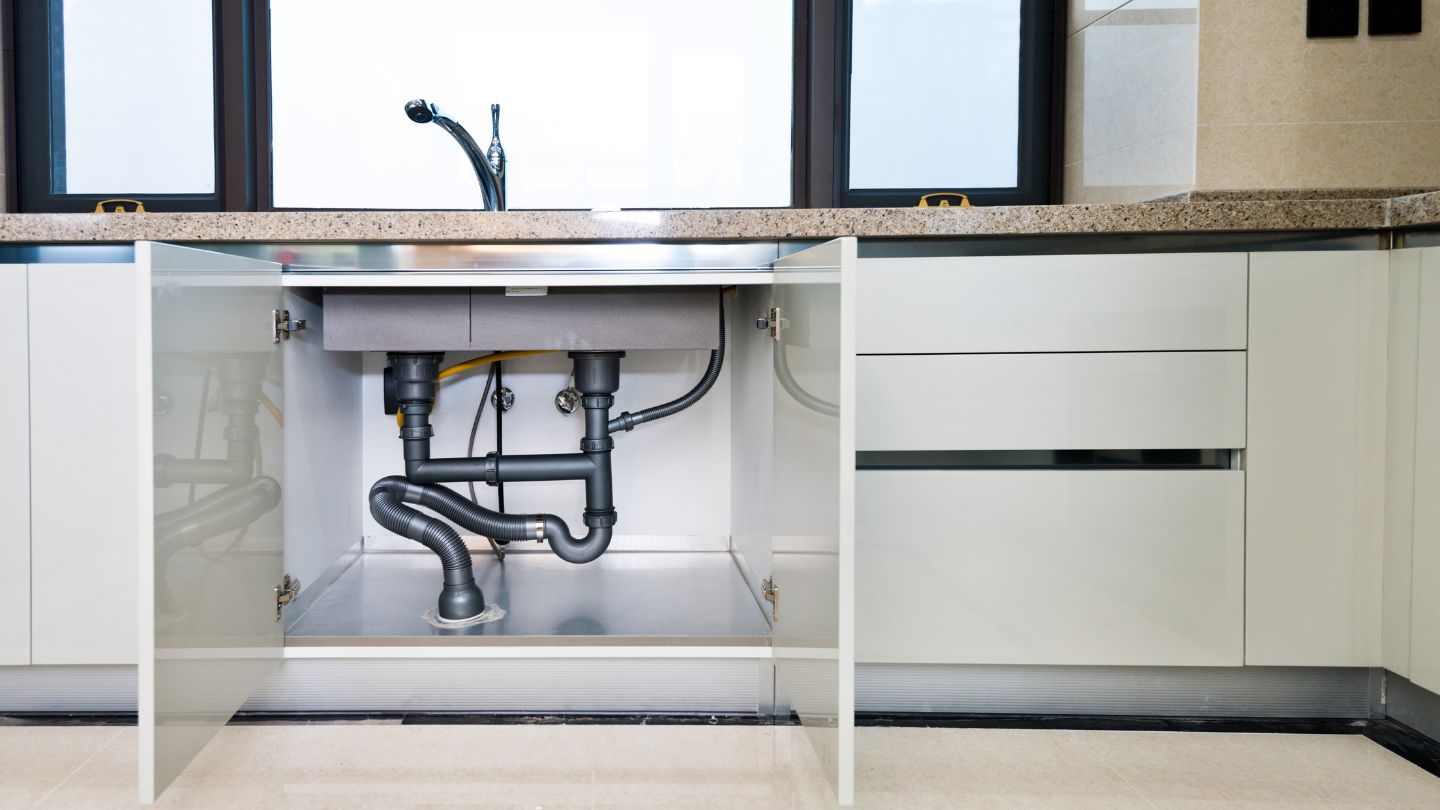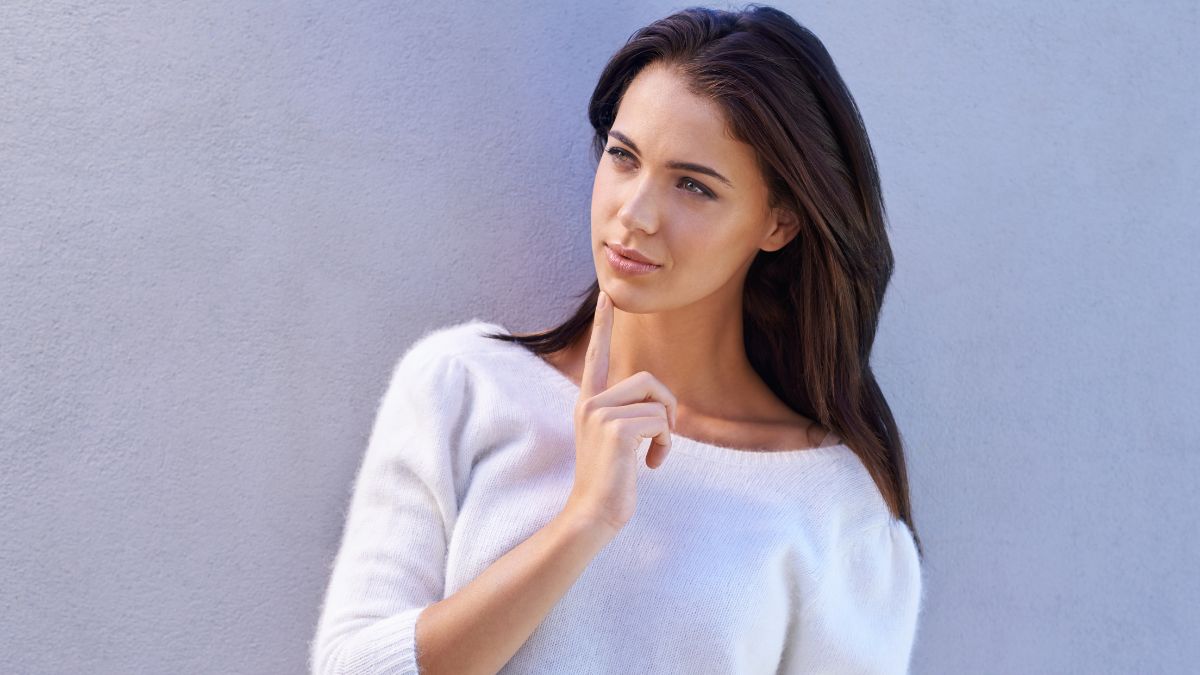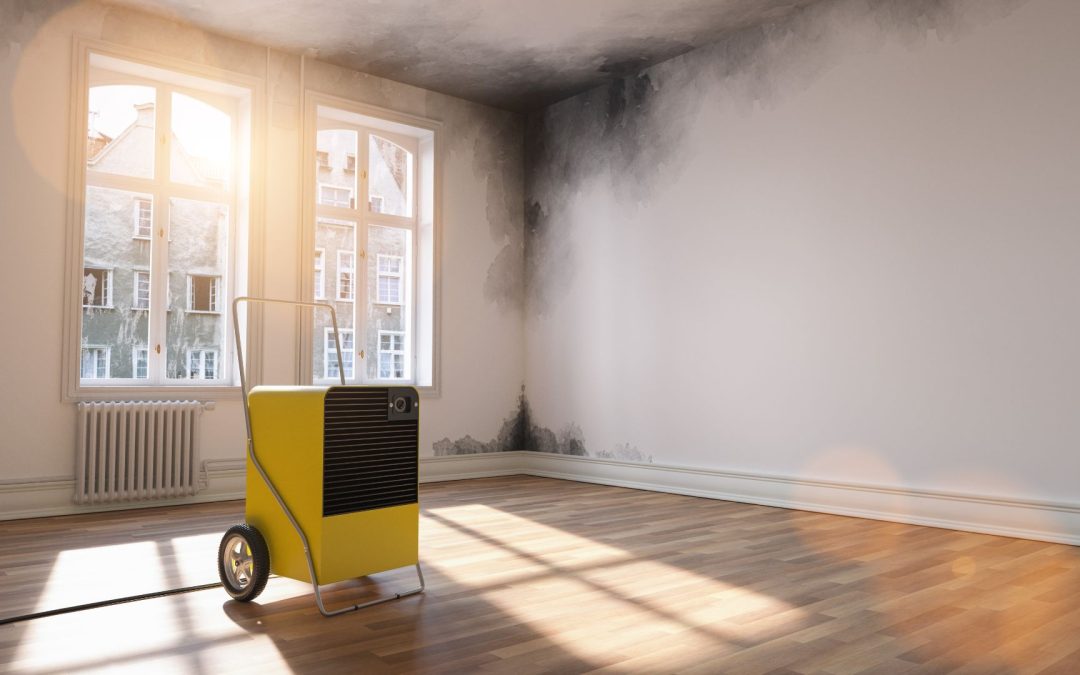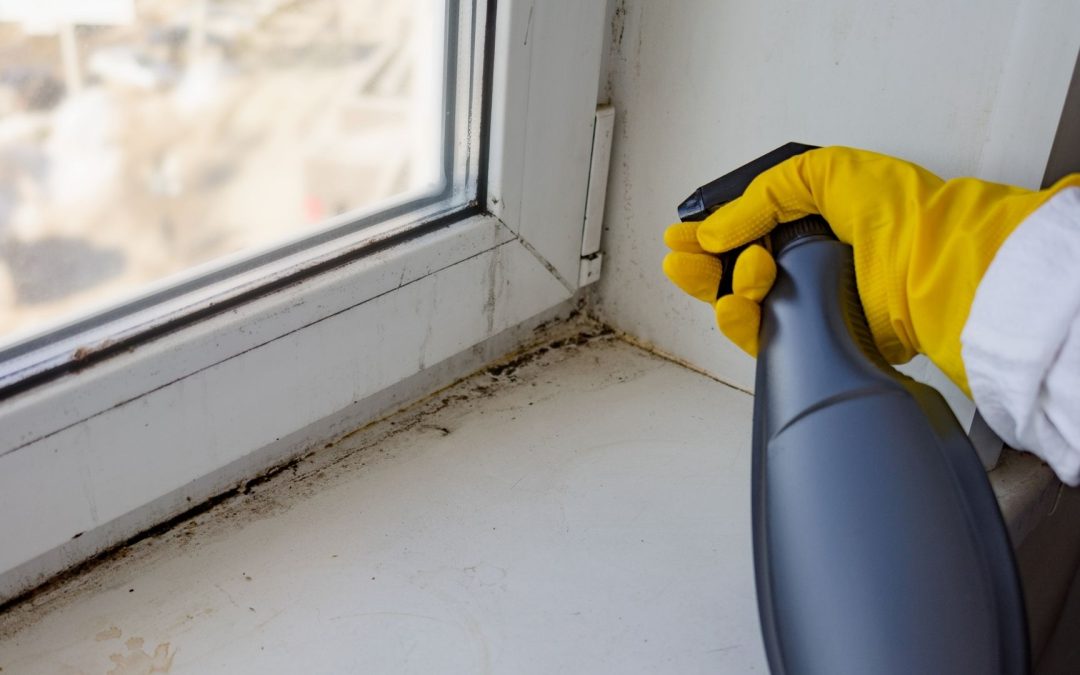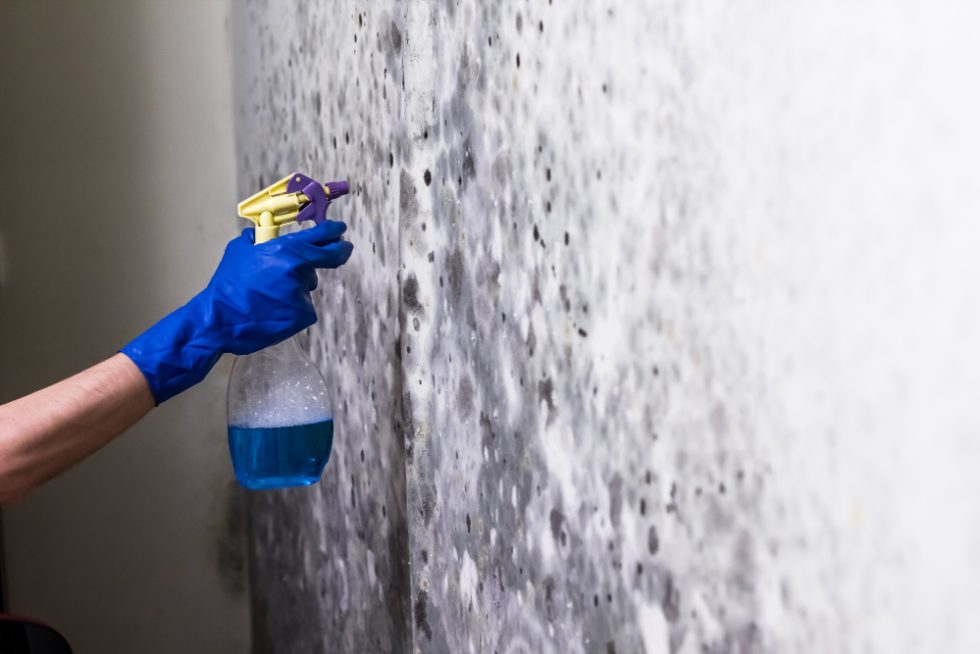
by Mold-B-Gone | Dec 6, 2023 | Mold Facts, Mold Removal
Understanding what mold mites are is crucial for anyone grappling with mold issues. These tiny, spider-like creatures are not just common in damp environments, but they thrive on mold, making them a frequent concern in homes with moisture problems.
Are Mold Mites Dangerous?
While they don’t bite or directly harm humans, their presence can significantly degrade air quality. This becomes particularly problematic for individuals with allergies or respiratory issues, as mold mites can exacerbate these conditions.
Read more: How Do I Know If I’m Allergic To Mold?
Distinguishing Mold from Other Fungi
In tackling mold mite issues, understanding the difference between mold and fungus is important. While all molds are fungi, not all fungi are molds. Mold is a specific type of fungus that creates a more hospitable environment for mold mites. Thus, distinguishing the two helps in targeted remediation efforts.
Steps to Eliminate Mold Mites
The key to getting rid of mold mites effectively is to address the root of the problem: mold. Mold mites feed on mold, so eliminating their food source is crucial. This can be done by doing the following:
- Identifying mold-infected areas: Look for spots with discoloration or a musty smell, typically in damp places like basements or under sinks.
- Cleaning the affected areas: Use mold-killing solutions such as bleach or vinegar to clean these areas thoroughly.
- Improving air circulation: Use fans or dehumidifiers to reduce moisture in the air, making it less conducive for mold and mold mites to thrive.
- Regular inspections: Keep an eye out for early signs of mold to prevent reinfestation of mold mites.
Preventive Measures
Prevention is always better than cure, especially with mold mites. Regular cleaning, reducing humidity levels, and promptly addressing any water leaks or dampness can significantly reduce the risk of mold and mold mite infestation. This includes:
- Using dehumidifiers in moisture-prone areas.
- Ensuring proper ventilation, especially in areas like kitchens and bathrooms.
- Fixing leaks and addressing condensation issues promptly.
- Keeping the house clean and free from clutter where mold can easily grow.
Get Expert Help with Mold Mite Removal
Don’t let mold mites signal a larger problem in your home. Take control of your indoor environment with Mold-B-Gone Remediation, your trusted mold removal specialist in Atlanta. Our team is dedicated to ensuring a healthy, mite-free living space for you and your family. Whether you’re dealing with a severe infestation or have specific mold sensitivities, contact us, and we will provide comprehensive solutions tailored to your needs. Remember, regular maintenance and professional expertise are your best defense against mold.

by Mold-B-Gone | Oct 23, 2023 | Mold Facts, Mold Removal
Mold is more than a mere aesthetic concern; it’s a sneaky infiltrator that brings a range of health problems, from respiratory issues, skin irritation, and allergic reactions to red, itchy eyes. Not only that, but mold also endangers the very structural foundation of buildings, making it a vital concern to address promptly and effectively to safeguard both people and properties.
Hence, timely interventions, like availing of a mold removal service in Atlanta, can be critical in managing and mitigating mold issues.
The Role of Air Purifiers in Battling Mold
It’s a common query: do air purifiers help with mold? The short answer is yes, they do, but with certain limitations. Air purifiers, especially those equipped with HEPA filters and UV-C technology, are proficient in capturing mold spores, preventing them from proliferating and spreading across your living spaces.
This means that while an air purifier helps with mold in terms of curbing airborne spores and maintaining air quality, they’re not a full-fledged solution for established mold infestations.
Read more: Indoor Air Quality: Why It Matters and How to Improve It
In the Ducts: A Different Mold Story
However, there are situations where even the most efficient air purifier struggles. If you’re thinking, “Can an air purifier help with mold in my air ducts?” it’s crucial to understand that mold in air ducts presents a unique challenge.
Once mold secures a foothold in this hidden area, fueled by accumulated moisture and debris, it can disperse spores throughout your space even as you breathe what you believe to be purified air. Therefore, while air purifiers can assist, they are not capable of rectifying mold issues within ductwork, and a professional cleaning service becomes indispensable.
The Limits of Air Purifiers in Mold Mitigation
It is pivotal to grasp that while air purifiers help with mold spores and contain the airborne spread to an extent, they don’t address the root cause or eliminate established mold colonies. Will an air purifier help with mold completely? No.
To eradicate mold, a combination of thorough cleaning, preventive practices, and strategic remediation, like managing humidity, fixing leaks promptly, and enhancing ventilation, is essential. Utilizing air purifiers should be seen as a supplementary preventive measure, not a solitary solution to a mold problem.
When the situation slips beyond what air purifiers can manage, that’s when specialists step in. Mold Removal Service in Atlanta, with a track record of securing thousands of homes in Atlanta from mold perils, steps in as your shield against mold infestations. Get in touch with us now and step into a future free from mold worries!

by Mold-B-Gone | May 23, 2023 | Killing Mold, Mold Removal
Mold is a common problem in several areas of the country. Yet, Atlanta’s humidity and heat mean that you may be more likely to suffer from this infestation. Let’s explore whether humidifiers are a viable solution to this pressing problem.
What Is A Dehumidifier?
A dehumidifier can help combat mold growth. Ultimately, dehumidifiers, as the name suggests, pull moisture from the air. This leads to a drier environment within the home.
So to answer the question, “Can a dehumidifier kill mold growth?” is yes and no. Indirectly, it prevents the habitat that mold loves to grow in. That being said, it won’t be enough to get rid of mold if it’s already taken hold. So you should always have professionals come out for mold removal in Atlanta.
How Does Mold Grow?
Aside from understanding “Will a dehumidifier kill mold”, and mites and fleas for that matter, let’s talk about the mechanism that allows mold to grow.
Mold loves moist, dark, damp environments. That’s why sinks, faucets, and other places in your home where there is water make an excellent mold habitat. Additionally, mold grows on paper, fabrics, cardboard, drywall, and paint.
And once it gets hold in your home, it can range from annoying to downright deadly.
How To Get Rid Of Mold
While you could try to install a dehumidifier and use some homemade methods, it’s best to have mold remediation done. Professional mold removal services kill the mold at its source so that it stops spreading.
After all, it’s very contagious, and once spores take hold, they tend to spread to other areas of your house — causing damage and health hazards.
Choosing A Mold Removal Company
When looking for the right removal services, ask them if they have insurance in place. Proper mold removal companies have insurance to guarantee their work for your protection.
Additionally, they should come out for inspection to properly assess the right method to use. And finally, look for a good online rating from other satisfied customers. This lets you know that you’re dealing with high integrity professionals with proven results.
Will Running A Dehumidifier Kill Mold? Summary
Contact Mold-B-Gone and get a free inspection. We’ll assess your property to see where mold is currently and potentially might be growing in the future. Then, we use state-of-the-art techniques and tools to remove the mold once and for all.
You deserve a clean, safe home. So reach out today and protect your property with expert guidance. After all, your house should be your refuge. And you shouldn’t have to ask questions like “Will a dehumidifier kill mold spores” ever again.

by Mold-B-Gone | May 2, 2022 | Mold Removal
Mold is a type of fungus that can grow almost anywhere there is moisture and organic material. It can cause health problems in people who are allergic to it, and it can also damage property. If you have mold growing in your home, you may be wondering if bleach is an effective way to treat it. In this blog post, we will explore the effectiveness of bleach at treating mold and provide some tips for preventing mold growth.
Does Bleach Kill Mold?
The answer to this question is both yes and no. Bleach can kill mold on hard surfaces, such as tile and glass. However, bleach does not kill mold spores on porous surfaces, such as wood and drywall. The reason for this is that bleach only kills the mold spores on the surface of the material. It does not penetrate into porous materials to kill the roots of the mold. As a result, mold can quickly regrow on treated surfaces if they are not properly cleaned and dried afterward.
So, while bleach can be effective at killing mold on some surfaces, it is not a complete solution for mold removal. If you have mold growing in your home, you should contact a professional Mold Remediation company to have it removed.
Preventing Mold Growth
The best way to deal with mold is to prevent it from growing in the first place. There are a few things you can do to reduce the risk of mold growth in your home:
- Keep indoor humidity levels low, ideally between 30 and 50 percent. Use a dehumidifier or air conditioner if necessary.
- Fix any leaks in your plumbing or roof as soon as possible.
- Ventilate damp areas such as kitchens, bathrooms, and laundry rooms. Use an exhaust fan or open a window when cooking, showering, or doing laundry.
- Use mold-resistant products when remodeling or building new construction. Materials such as drywall, paint, and carpet that are labeled “mold-resistant” can help to prevent mold growth.
Need basement-specific ideas? Read 10 Tips to Prevent Basement Mold.
Following these tips, you can help to prevent mold from growing in your home. However, if you already have mold growing in your home, it is best to contact a professional Mold Remediation company to have it removed. Bleach can be effective at treating mold on some surfaces, but it is not a complete solution for mold removal. Taking steps to prevent mold growth is the best way to keep your home healthy and free of this damaging fungus.
Contact us today if you need mold cleaning service in Atlanta. We are here to help! Visit our website or give us a call.

by Mold-B-Gone | Dec 15, 2021 | Mold Information, Mold Removal
Mold and mildew are two words that people often interchange with one another. They are used to describe the growth of fungi on organic material, but they have some key differences. Both can be harmful to your health if you come into contact with them or breathe in spores they release into the air, but they require different approaches. Here’s what you need to know about mold vs. mildew.
What Is Mold?
Mold is a type of fungus that grows in moist, damp places. It thrives on organic material with weakened cell walls to break down and absorb nutrients from its surroundings. Mold can grow practically anywhere indoors where there’s plenty of moisture, including concrete, wood floors, drywall or sheetrock, countertops, or tiles made of stone or cement, fabrics like carpeting, and upholstery materials.
What Is Mildew?
What’s the difference between mold and mildew? Like mold spores floating through the air see an opportunity to attach themselves to surfaces, they come into contact with when it gets wet enough for them to flourish in your home. They smell musty but usually don’t release harmful toxins unless you breathe in their spores, which cause infections similar to other fungal diseases such as Valley Fever and Ringworm.
How to Get Rid of Mold and Mildew?
Both types of fungi can be removed with a gentle scrubbing action using soap, water, and elbow grease to strip away the spores attached to surfaces so they don’t spread or grow back. You may need special tools like brushes or mops if mold has grown into porous areas such as drywall which you cannot clean by hand.
For fabrics like drapes and carpeting that hold on to mildew smells even after cleaning, try adding some baking soda for more thorough deodorizing power before laundering them again in hot water since cold washing won’t remove stubborn odors caused by mildew residue left behind on fibers.
Is DIY Mold and Mildew Cleaning Safe?
If you are worried about the safety of cleaning mold and mildew yourself, don’t! Instead, turn to the professionals at Mold-B-Gone for mold cleaning services in Atlanta. We have the experience and know-how to safely remove these harmful fungi from your home without exposing you or your family members to dangerous spores. Contact us today for a consultation or to learn more about the processes and cleaning solutions we use!
Ready to learn more? Read: Top 10 Reasons You Need to Be Aware of Mold!

by Mold-B-Gone | Nov 6, 2021 | Mold Removal
Did you know that mold can grow on a variety of surfaces, including wood, drywall, concrete, and even plastic? Mold is typically found in areas with high moisture levels, such as kitchens and bathrooms. Due to its unpleasant nature and potential health risks, you’ll want to clean mold off your walls when you find it. Here is a step-by-step guide to going DIY with getting mold off a wall.
If you have been struggling to remove mold from your walls yourself or if the problem has grown out of control, then it might be time to turn to our mold cleaning service in Atlanta.
How to Remove Mold From Your Walls
The first step is to clear the area around the wall. Mold spores will latch on to anything they can, so if you get them on your furniture or rugs, they will take root. If you have wall-to-wall carpet, cover it. Everything you can move, push to the other side of the room.
Next, try cleaning the wall with an antimicrobial solution. With certain types of mold, this will get the job done. Then, you clean up the area, put things back in place, and wait to see if this address your mold problem.
If the mold returns, you need to dig deeper. Use coarse-grit sandpaper to strip off all of the paint around the moldy area. Then wipe down the drywall using soapy water and an antimicrobial solution. Finally, spray it with disinfectant before letting everything air out. Once it dries, you can repaint.
Need a little more guidance? Read: What Can I Do If I Have Mold In My Apartment?
What if the Mold Keeps Coming Back?
Mold doesn’t like light and air. If you can get these two things into the affected area, mold will have a hard time growing there again after it is removed completely. You also might need to cut a hole into your wall to clean behind the drywall.
If this sounds too complicated, let us help! We come equipped with everything we need so you don’t have to worry about how to remove mold from wood, drywall, concrete, and more. We are your experts in mold removal as well as Commercial Mold Removal in Atlanta.
